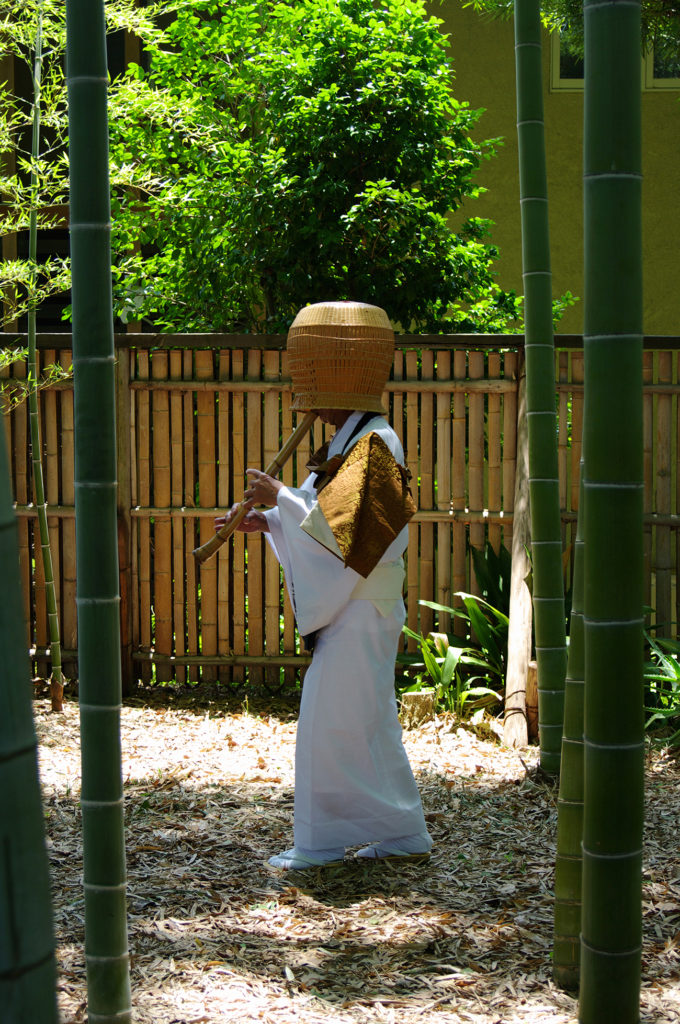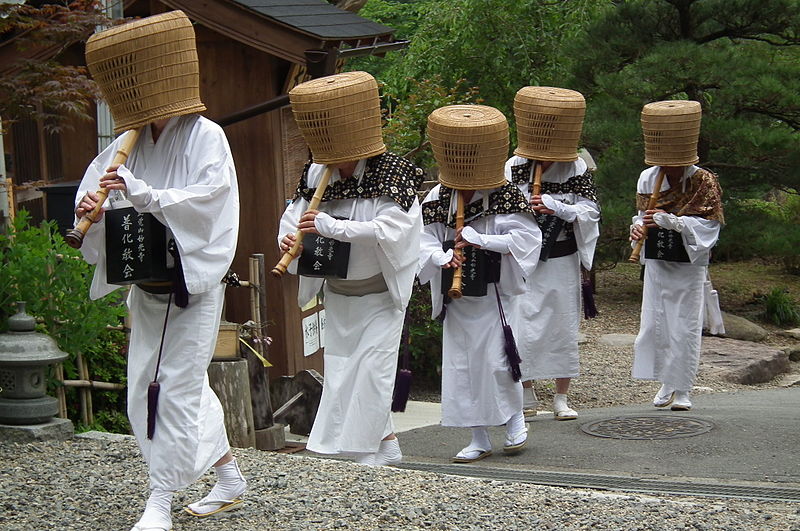
The Unique Japanese Komusō Monks
The komusō (虚無僧) were a popular group of monks who relied mainly on charity or begging to survive during the Edo period (1603–1868). They were from the Fuke school of Zen Buddhism. Fuke Zen arrived in Japan in the 13th century and was derived from the teachings of Linji Yixuan, a Zen preacher from China during the 9th century. However, Fuke was a name for one of Linji Yixuang’s peers, Puhua, who co-founded the sect.
 What made the komusō monks stand out among others was how they wore a straw basket (a reed hood called a tengai or sedge) on their heads so that their faces were not visible.
What made the komusō monks stand out among others was how they wore a straw basket (a reed hood called a tengai or sedge) on their heads so that their faces were not visible.
Daikokuji-Sasayama Komusō with shakuhachi. | 松岡明芳
The tengai is usually woven from bamboo, rattan, reed, or grass. The unique hat resembles a basket and has a headband secured with a string that allows the hat to move freely as the wearer moves while he plays the shakuhachi.
Komusō monks were also known for playing solo original musical pieces (honkyoku) on a type of traditional Japanese bamboo flute (shakuhachi). Honkyoku renditions were typically played during meditative practices known as suizen. The practice is intended to be a healing modality for the monks, a method to attain enlightenment as well as gather alms from passersby.
The komusō belief is that the tengai basket that completely covers the head of a monk suppresses the ego and helps people to listen to the music being played on the shakuhachi rather than be concerned about looks or identity of the person. It is also said that the tengai hides the unique technique of how the monks play the shakuhachi.
The Komusō monks were given the rare privilege of being allowed to cross borders freely during Japan’s feudal era. This enabled them to reach other far-off temples, which led to the development of other regional musical pieces.
“Sketches of Japanese Manners and Customs”, by J. M. W. Silver, Illustrated by Native Drawings, Reproduced in Fac-simile by Means of Chromo-lithography, published in London in 1867.
The komusou Kurosawa Kinko I (1710–1771) is the first known piece that incorporated styles from all around Japan. After the Edo period, the Japanese government introduced reforms that led to the abolishment of the Fuke sect, though records of the musical repertoire survived and are being revived today. The Komusō monks and their original musical pieces remain an indelible part of Japan’s culture and history.

